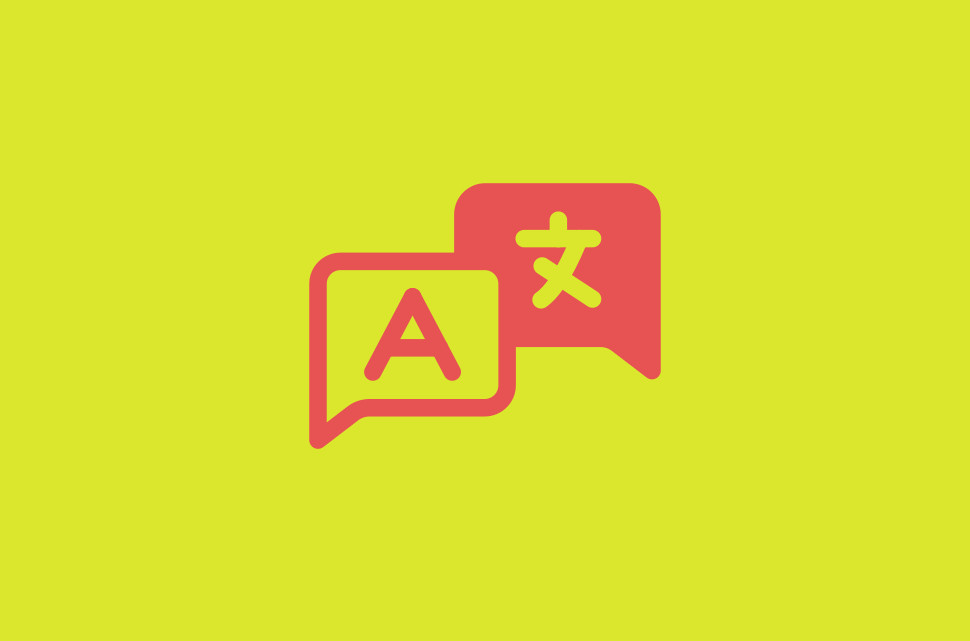Whether you want to advance your career, boost your mind, see the world, or connect with new friends and other cultures, learning a new language is a rewarding endeavour. In fact, the benefits of learning a new language are undeniable.
Learning a language isn’t easy and there are many factors that can determine your pathway to fluency. This can include your age, your learning style, and the mechanics of other languages in comparison to your own.
[Get the latest on streaming entertainment. Sign up for the ExpressVPN Blog Newsletter]
A great way to start is to immerse yourself in the language you’ve chosen through conversing with native speakers, taking online lessons, or watching international movies and shows. Interestingly, obsessively watching content in a foreign language is a tried and true method for language learners.
In a time where studying and working from home has become the status quo, your teachers can now be YouTube, Netflix, and Spotify. Using a VPN can help to unblock international content and help you on your journey to learning a new language.
Who says you can’t make learning fun?
Learning languages with YouTube
YouTube is a treasure trove for language learners. Between free language courses, foreign language channels, and live international news broadcasts, starting with YouTube is a no-brainer!
Before we jump into it, let’s first take a look at a great little Chrome extension called Language Learning with Youtube (BETA). Where possible, subtitles are shown on videos in two languages: the language that you’re learning and the language you already speak. You can also vary the speed of the video to read subtitles of dialogue that’s spoken too quickly and also make use of a pop-up dictionary. Do keep in mind that this extension is in beta and may not work on all content.
Some great YouTube channels for learning languages include:
BBC Learning English
The perfect starting point for learning English. BBC Learning English uploads daily videos that focus on different topics aimed at students of all ages. Not only is English the most spoken language in the world, it is also one of the most versatile and flexible.
Easy Languages
A great channel for learning basics like grammar, greetings and phrases, and colloquialisms—in a variety of languages! Each video focuses on a different language and topic, and includes subtitles both in English and the language of focus.
Wikitongues
Founded in 2014 as a non-profit, Wikitongues is a global network of grassroots linguists dedicated to providing (and preserving) free videos and dictionaries for every language in the world. Here you’ll find a collection of videos of people speaking common and obscure languages from around the world.
TEDx Talks
An offshoot of the popular TED Talks channel, TEDx Talks are curated talks organized by independent bodies and institutions. Hear what some leading experts have to say about the best ways to master a new language. One of the most viewed videos from TEDx Talks is Chris Lonsdale’s “How to learn any language in six months.” Other great talks include Sid Efromovich’s “5 techniques to speak any language,” Marianna Pascal’s “Learning a language? Speak it like you’re playing a video game,” and Matthew Youlden’s “How to learn any language easily.”
Who knows? Once your fluency improves, you can start diving into foreign language talks on the channel!
Learning languages with Netflix
We’ve all got that show that we’ve binged watched over and over again. Maybe you’re a Friends person, maybe it’s The Office, or maybe it’s Breaking Bad. Whatever it is, add a whole new dimension to your favorite movies and shows with Netflix by rewatching them in different languages! This most likely works best with movies and shows that are popular across international markets as there will be multiple language options both in audio and subtitles. Once you become more confident in the language that you’re learning, try watching content only in the new language with no subtitles enabled.
If you’re watching Netflix on a laptop or computer, you can also try out the Language Learning with Netflix Chrome extension by the same developers as Language Learning with YouTube extension mentioned above. As with its YouTube counterpart, this extension allows for simultaneous dual-language subtitles and a pop-up dictionary.
Learning languages with Spotify
Specialist language podcasts, intensive language lessons, and foreign-language music playlists are just some of the ways that Spotify is great for passive learning when you’re on the move. What better way to fill your daily commute or morning run than by firing up Spotify in your headphones.
The Fluent Show
A great podcast focused on the methodology of language learning hosted by two polyglots who speak a whopping 15 languages between them! The Fluent Show is a great starting point for getting into the mental space for learning a new language.
Adept English
Adept English publishes biweekly audio English lessons along with accompanying transcripts on their website. Subject matter across lessons are designed to cater to students of varying backgrounds and capabilities.
Babbel Mixtapes
Here’s a fun one! The Babbel Mixtapes podcast is curated to take listeners on an “acoustic journey through the Latin American landscape” by introducing Spanish language lessons through music. The podcast is designed to be a supplementary aid to existing Spanish lessons.
Learning languages with Wikipedia
Wikipedia is one of the largest sources of information online and provides free access to over 55 million articles in 300-plus languages. Wikipedia is part of the Wikimedia Foundation, which also includes Wiktionary (free dictionary), Wikiversity (free course materials), and Wikisource (free library) among others, all available in a wide variety of languages.
Take advantage of articles available in different languages to compare and contrast information in relation to your mother tongue. This way, you can build your vocabulary by reading topics you’re already familiar with. Larger Wikipedia articles also tend to include pronunciation guides and audio samples for the subjects you’re researching.
Learning languages with Skype
Online language exchanges are a great way to meet and converse with native speakers of other languages. By joining Skype communities, you can take full advantage of learning a language from the comfort of your home. The best place to start looking for language exchange partners are on sites like italki, Busuu, and speaky. Reddit communities like r/languagelearning and r/polyglot are great too!
Read more: How technology affects education

























Comments
Very interesting
That’s a nice article
eah, there are so many ways to learn new languages
Yeah, there are so many ways to learn new languages now. Just start to learn. 🙂 But, as for me, learning apps demand students being more organized since some learners open a desktop browser and forget about their learning among all the distractions. A language learning app is like a specific learning plan – if you launch it, you need to learn. I like this list of apps – https://ivypanda.com/blog/free-language-learning-apps – especially, Elevate and HiNative. But these apps fit for advanced learners, beginners should start from Drops, for example.
I want submet in this programe